The types of environmental hazards are:
For specific sign details such as size and symbol height refer to sign specifications.
Table 6‑17: Traffic signs for vertical alignment hazards
|
Sign code |
Example |
Description/use |
|---|---|---|
|
W14-3 Sudden dip |
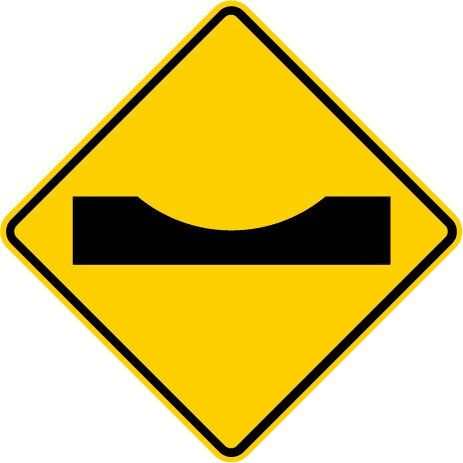 |
Should be installed where in the opinion of the RCA, a sharp dip in the profile of the road is likely to cause considerable discomfort to road users, to cause shifting of a load, or to deflect a vehicle from its course and cause loss of control when crossed at speed. Should not be used to warn of inadequate sight distance for overtaking manoeuvres. For sign location refer to note 1. |
|
W14-4 Hump |
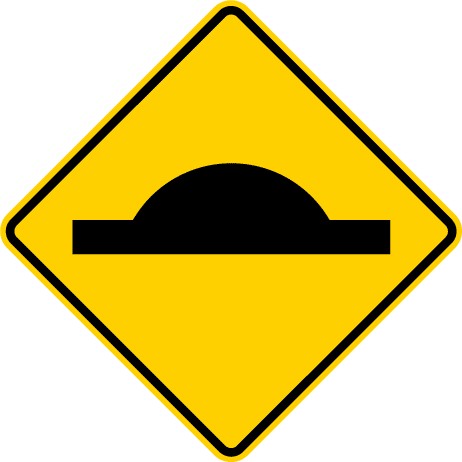 |
Should:
Should not:
For sign location, refer to note 2. |
|
W14-5 Uneven surface |
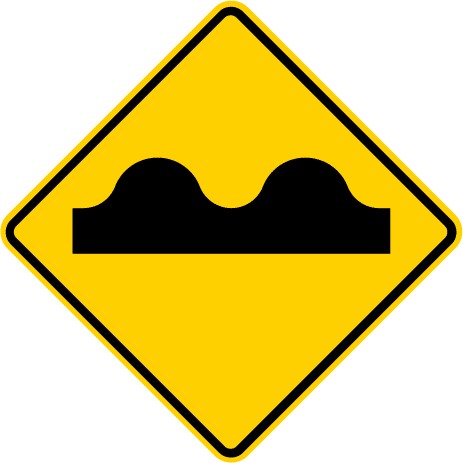 |
Should be installed where in the opinion of the RCA, road surface causes a hazard For sign location, refer to note 1. |
Table 6‑17 notes:
Table 6‑18: Signs for road surface hazards
|
Sign code |
Example |
Description/use |
|---|---|---|
|
W14-7 Slippery Surface |
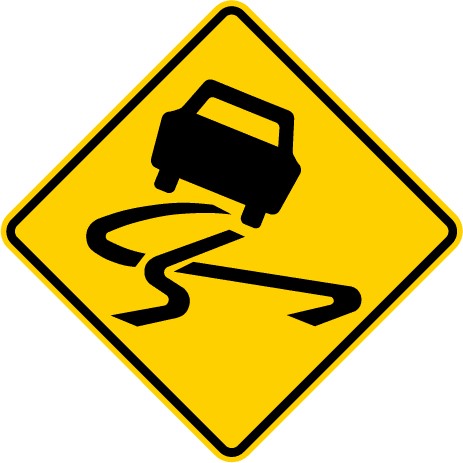 |
Should only be used in conjunction with W14-7.1, W14-7.2, or Wa4-7.3 signs. Should not be installed separately. For sign location, refer to note 1. |
|
W14-7.1 Supplementary – slow when frosty |
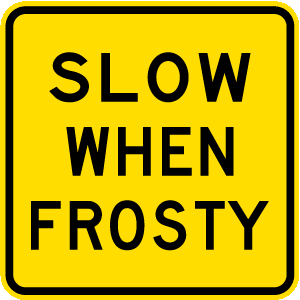 |
Should be used in advance of short sections of road where in the opinion of the RCA, ‘local climatic conditions’ cause ice to form on the road at greater than is general in the locality; Where several such sections of road occur in close proximity, an RCA may use additional supplementary W12-3.1 Curve sign supplementary – next ‘[distance]’ km signs for the route along with W14-7.1. Separate W14-7.1 signs may be used within the overall length to highlight particularly hazardous local areas For sign location, refer to notes 1 and 2. |
|
W14-7.2 Slippery surface when wet |
|
Should be:
Should not be used where the hazard is of a temporary nature or due to road works. The W3-2 Slippery surface sign should be used instead. No other sign may be attached to the W14-7.2 sign or its support. For sign location, refer to notes 1 and 2. |
|
W14-7.3 Supplementary gravel road |
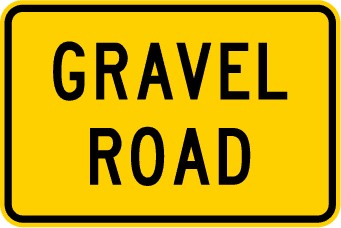 |
Should be:
Should not be used on a sealed road in advance of a turn off to an unsealed road. For sign location refer to notes 1 and 2. |
|
W14-6 Slips/falling debris |
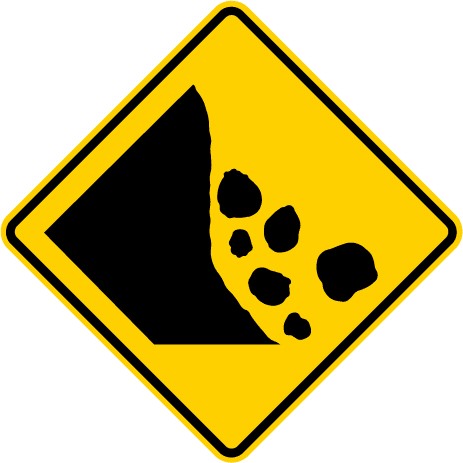 |
Should:
For sign location, refer notes 1 and 2. |
|
W14-7.4 Gravel road |
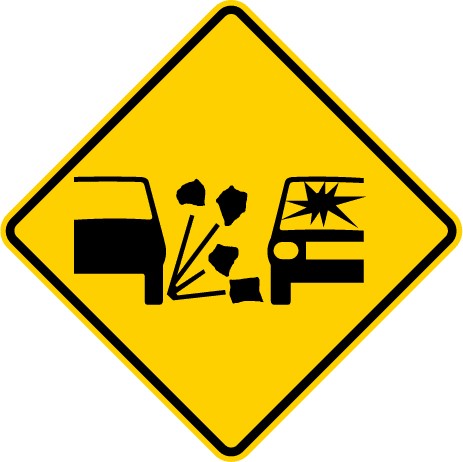 |
Should be installed in rural areas in advance of permanent unsealed sections of a main route where in the opinion of the RCA it is unsafe to travel on the gravel surface at the operating speed of the adjoining sealed section because of the potential for vehicles to lift loose stones and create a hazard for oncoming traffic. For sign location, refer notes 1 and 2. Can be used in conjunction with W14-7.3 Supplementary gravel road sign. |
|
W12-3.1 Curve sign supplementary – next ‘[distance]’ km signs |
 |
May be installed in conjunction with the other signs in this table where the hazard extends over a length of 800m or more. Must only be used as a supplementary plate to another permanent warning sign. The number may be varied to the appropriate length of the hazard. The sign may be repeated at intervals along the hazardous section of road at a maximum interval of 5km. |
Table 6‑18 notes:
|
Operating speed |
Distance |
|---|---|
|
50km/h |
65m |
|
70km/h |
100m |
|
80km/h |
120m |
|
90km/h |
140m |
|
100km/h |
160m |